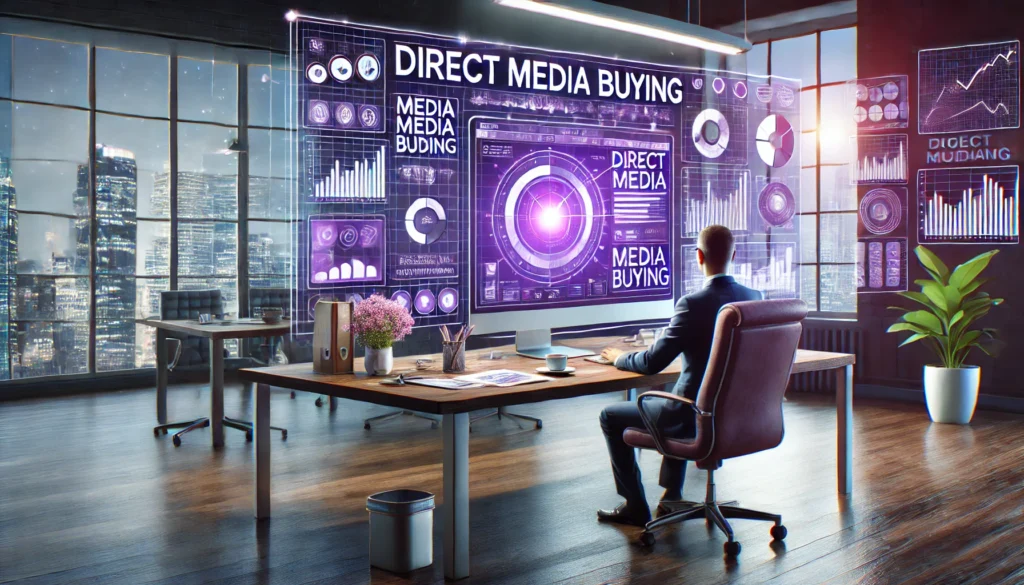In the rapidly evolving landscape of digital advertising, affiliates (publishers) seeking to generate their own income face a crucial decision: whether to opt for programmatic advertising or direct media buying. Both methods have their unique advantages and disadvantages, and understanding these can help affiliates make informed decisions that align with their goals. This article delves into the intricacies of programmatic vs direct media buying, offering a comprehensive analysis for those looking to maximize their revenue.

Understanding Programmatic Advertising
Programmatic advertising refers to the automated process of buying and selling ad inventory through real-time bidding (RTB) systems. This method leverages advanced algorithms and data insights to target audiences more precisely and efficiently than traditional methods.
Advantages of Programmatic Advertising
Programmatic advertising offers several benefits that make it appealing to affiliates:
Efficiency and Automation
One of the key advantages of programmatic advertising is its efficiency. The automation of ad buying processes saves time and reduces the need for manual negotiations and interventions. This allows affiliates to focus more on strategy and content creation rather than the logistics of ad placements.
Precise Targeting
Programmatic advertising utilizes data and algorithms to target specific audience segments. This precision ensures that ads are shown to users who are more likely to engage with the content, resulting in higher conversion rates and better ROI.
Real-Time Data and Insights
With programmatic advertising, affiliates can access real-time data and insights about their campaigns. This immediate feedback allows for quick adjustments and optimizations, ensuring that the ad spend is always being used effectively.
Disadvantages of Programmatic Advertising
Despite its advantages, programmatic advertising also has its drawbacks:
Complexity and Learning Curve
The complexity of programmatic advertising can be daunting for newcomers. Understanding how to navigate the platforms, interpret data, and optimize campaigns requires a significant investment in learning and potentially hiring specialized personnel.
Ad Fraud and Quality Concerns
The automated nature of programmatic advertising opens the door to ad fraud and issues with ad quality. Ensuring that ads are displayed on reputable sites and viewed by real users requires diligent monitoring and the use of sophisticated fraud detection tools.

Exploring Direct Media Buying
Direct media buying involves negotiating and purchasing ad inventory directly from publishers or media owners. This traditional method is characterized by personal interactions and tailored deals.
Advantages of Direct Media Buying
Direct media buying provides distinct benefits that can be advantageous for affiliates:
Control and Transparency
One of the primary benefits of direct media buying is the level of control and transparency it offers. Affiliates can choose exactly where their ads will appear, negotiate terms directly with publishers, and maintain greater oversight of their campaigns.
Stronger Relationships
Building direct relationships with publishers can lead to more favorable terms and opportunities for collaboration. These relationships can result in exclusive deals, better ad placements, and mutual trust that benefits both parties.
Customization and Creativity
Direct media buying allows for more customization and creative freedom. Affiliates can work closely with publishers to develop unique ad formats and placements that align with their brand and campaign objectives.
Disadvantages of Direct Media Buying
However, direct media buying also has its limitations:
Time-Consuming Process
The manual nature of direct media buying makes it a time-consuming process. Negotiating deals, managing relationships, and handling logistics require significant effort and resources.
Limited Scalability
Direct media buying may not be as scalable as programmatic advertising. The personalized approach is effective for specific campaigns but can be challenging to implement on a larger scale without substantial resources.
Direct vs Programmatic: Making the Choice
Choosing between programmatic advertising and direct media buying depends on various factors, including budget, campaign goals, and available resources. Here’s a closer look at how affiliates can navigate the direct vs programmaticdecision:
Budget Considerations
Programmatic advertising can be more cost-effective for affiliates with limited budgets due to its efficiency and real-time bidding. On the other hand, affiliates with larger budgets may benefit from the control and customization of direct media buying.
Campaign Goals
The nature of the campaign plays a crucial role in the direct vs programmatic decision. For brand awareness and broad reach, programmatic advertising might be the better choice due to its scalability and targeting capabilities. For campaigns that require specific placements and creative executions, direct media buying could offer the necessary flexibility and personalization.
Resource Availability
Affiliates with access to specialized personnel and tools might find programmatic advertising more manageable despite its complexity. Conversely, those who prefer hands-on management and direct control may lean towards direct media buying.

Integrating Both Approaches
In many cases, the best approach might be a hybrid one, combining the strengths of both programmatic advertising and direct media buying. Here’s how affiliates can integrate both methods effectively:
Strategic Allocation
Affiliates can allocate a portion of their budget to programmatic advertising for broad reach and efficiency, while reserving a portion for direct media buying to secure premium placements and build relationships with key publishers.
Cross-Channel Synergy
Leveraging both methods can create a synergistic effect. Programmatic advertising can drive traffic and awareness, while direct media buying can reinforce brand messages through high-impact placements and customized campaigns.
Continuous Optimization
By continuously monitoring and optimizing both programmatic advertising and direct media buying efforts, affiliates can ensure that they are maximizing their ROI. Real-time data from programmatic advertising can inform direct deals, and insights from direct campaigns can enhance programmatic strategies.
Conclusion
The decision between programmatic advertising and direct media buying is multifaceted and depends on an affiliate’s specific needs and goals. Each method has its unique set of advantages and disadvantages, making it crucial to evaluate them in the context of individual campaigns.
Affiliates looking to generate their own income must weigh the efficiency and precision of programmatic advertisingagainst the control and customization offered by direct media buying. By understanding the nuances of programmatic vs direct media buying, affiliates can make informed decisions that optimize their ad spend and enhance their overall strategy.In the dynamic world of digital advertising, staying informed and adaptable is key. Whether choosing programmatic advertising, direct media buying, or a combination of both, the ultimate goal is to create effective, high-performing campaigns that drive revenue and growth.
